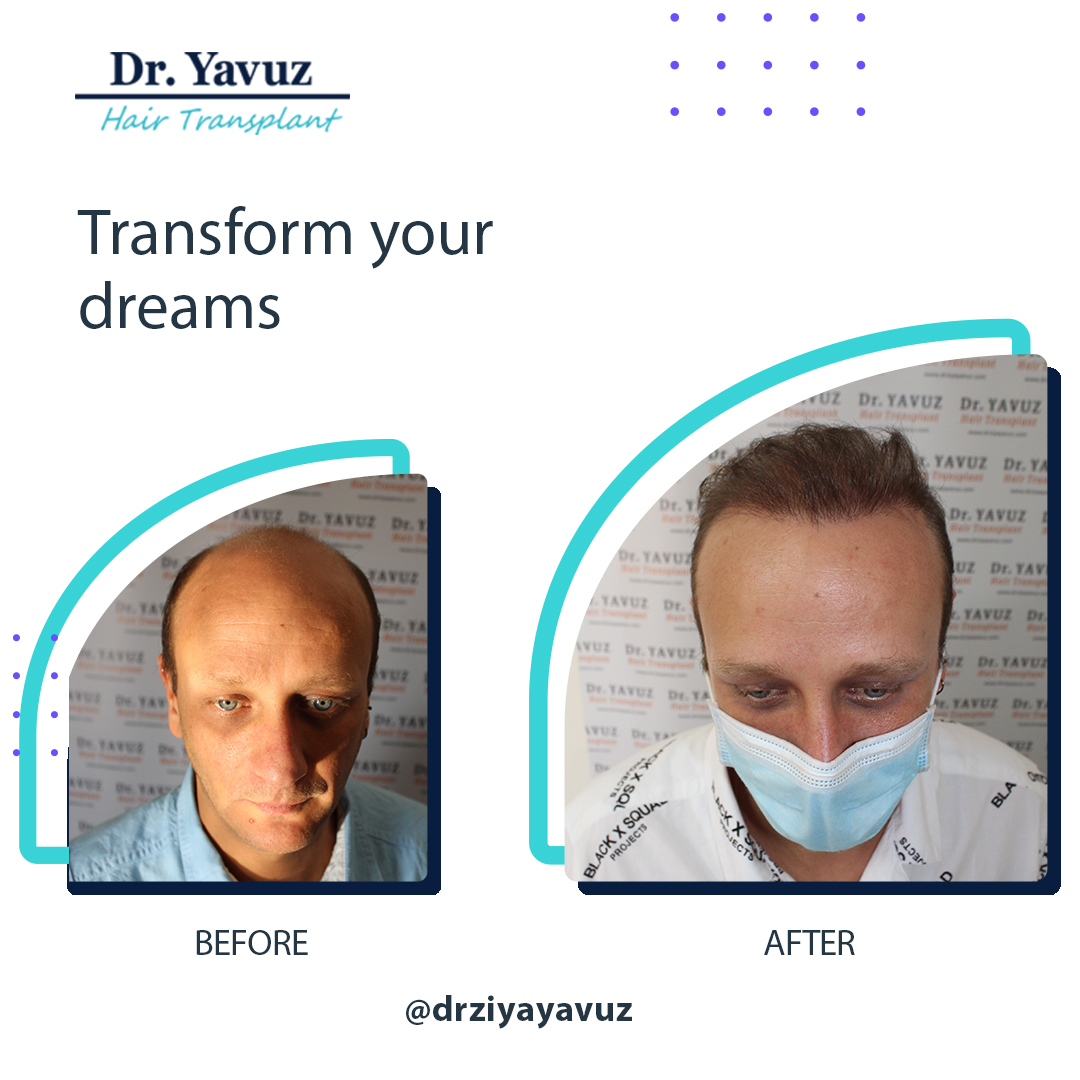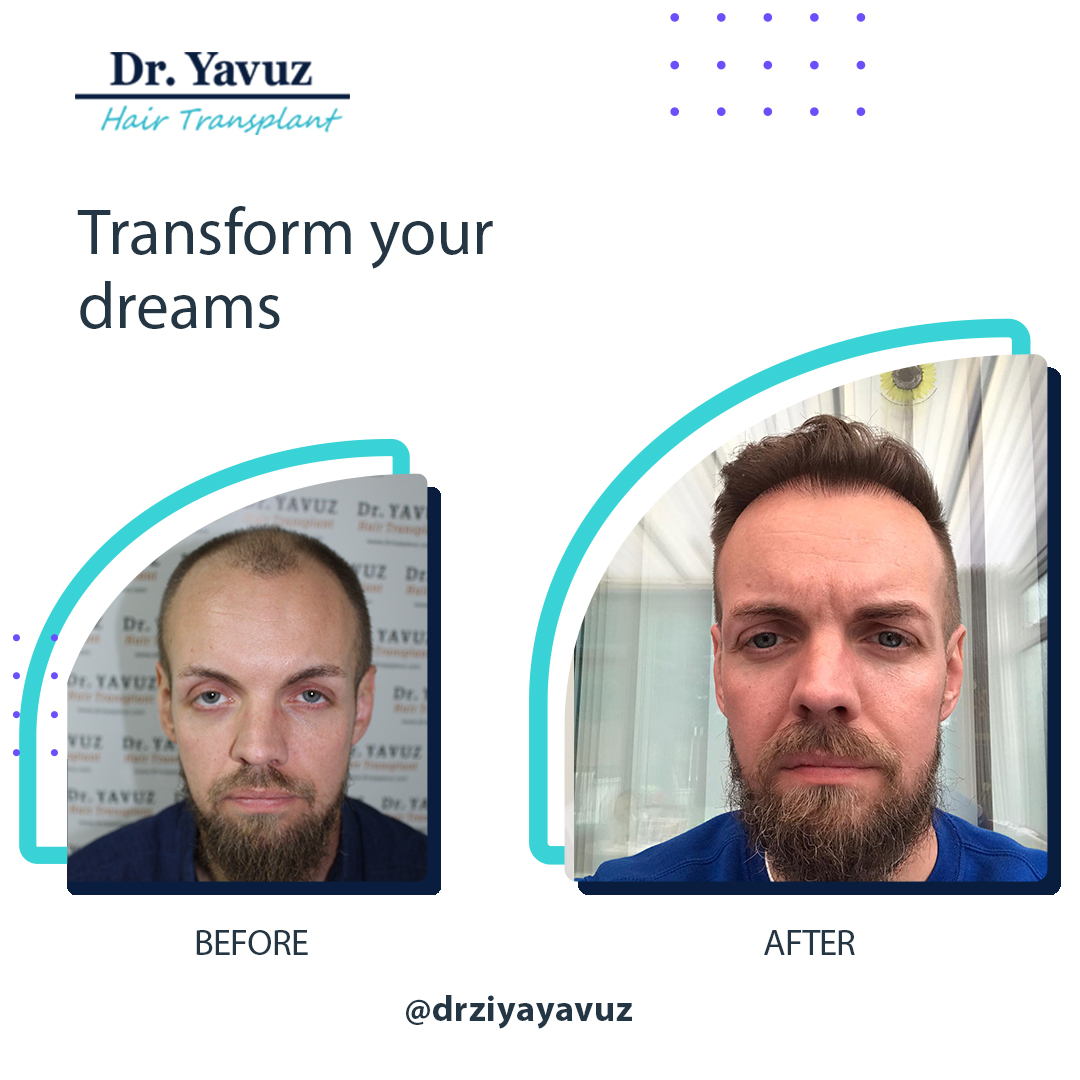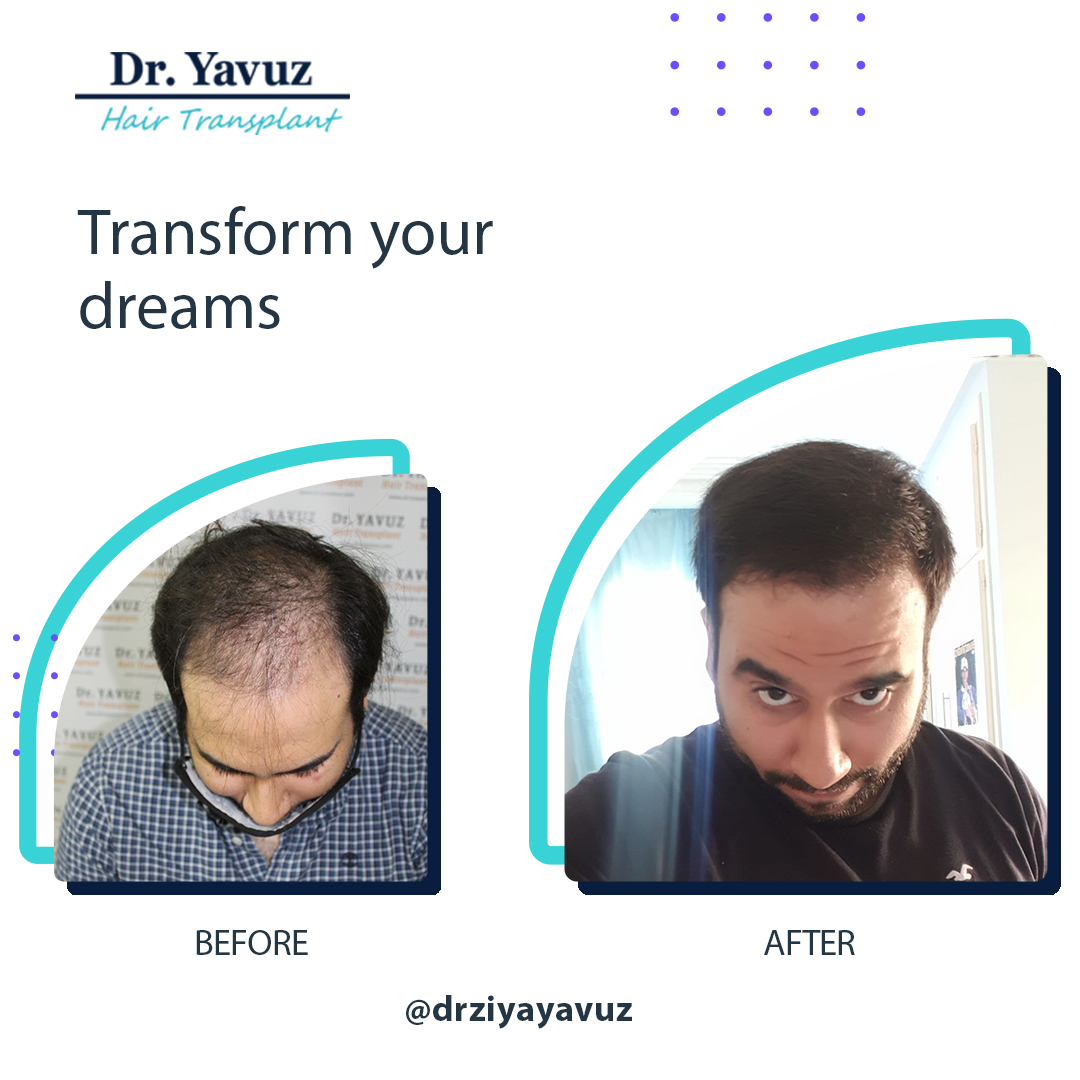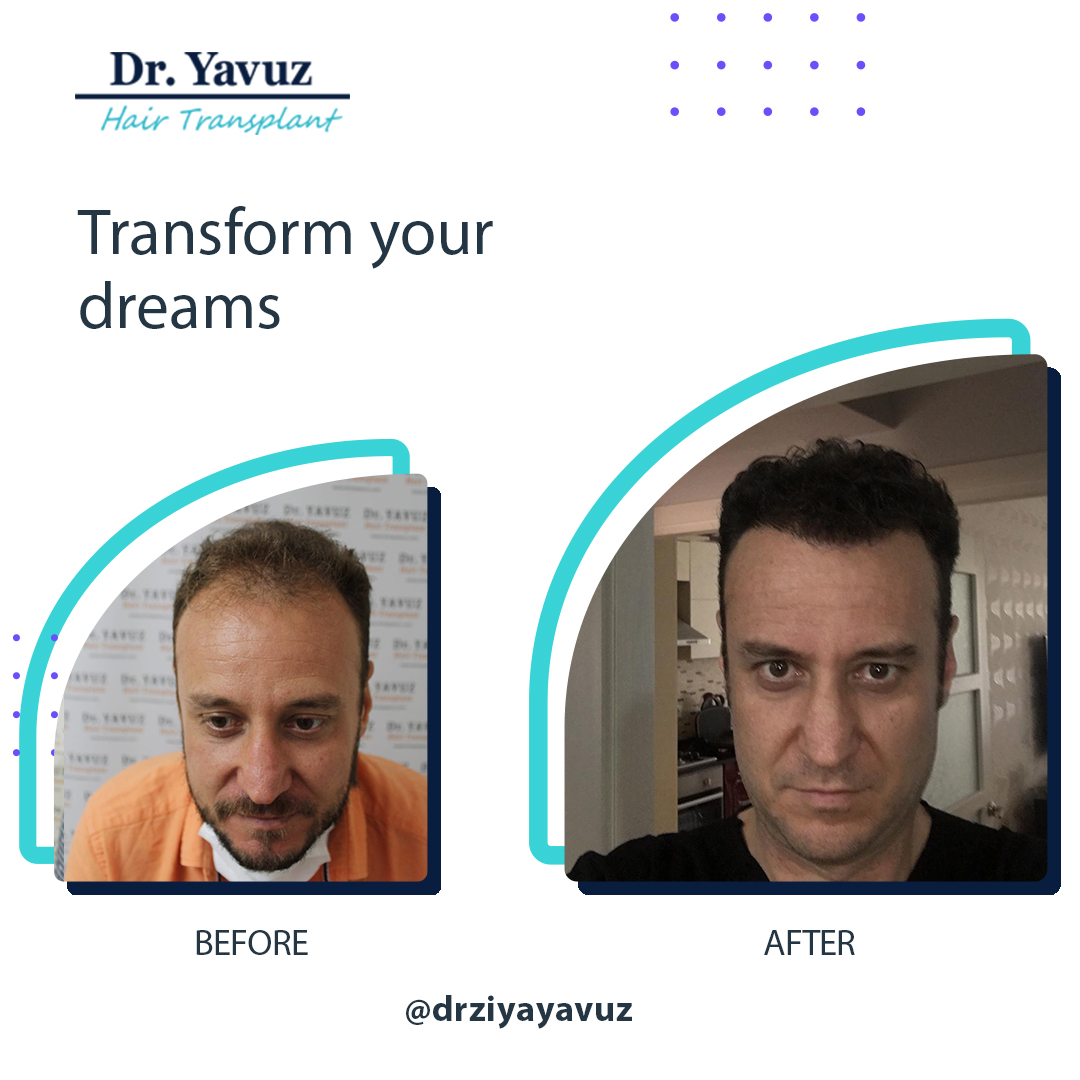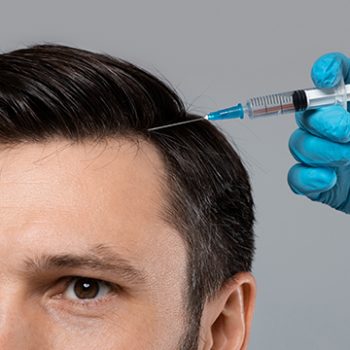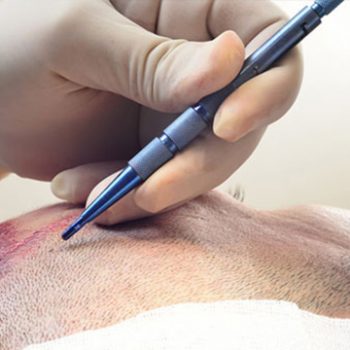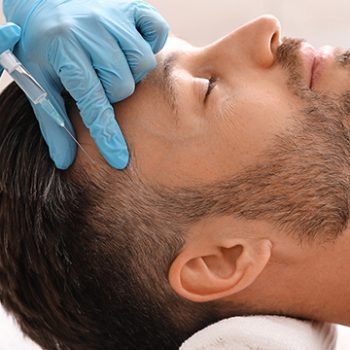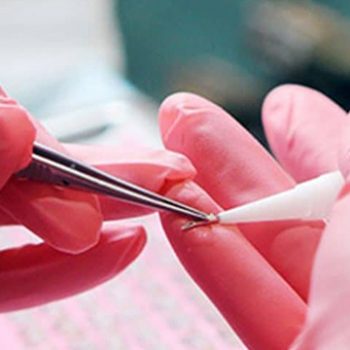Beard transplantation is one of the preferred aesthetic surgery methods to eliminate the problem of sparseness or absence of hair in the beard area. With the beard transplantation process, the grafts taken from the person are transferred to the problematic area in the beard area, in this way we eliminate the aesthetic problem of the patient.
Providing a permanent and natural appearance with beard transplantation is seen as the most important advantage of this procedure. In addition, the beard shaping service along with the beard transplantation process increases the popularity of the process. Before the beard transplant operation, an ideal beard appearance is determined in line with the patient’s nose structure and facial structure. In this way, it is possible to achieve an appearance that will fully meet your expectations at the end of the treatment.
In Which Cases Beard Transplantation is Needed?
When the cases that require beard transplantation are studied, we can say that the problem of sparseness or absence of beard can be occurred by many different genetic, personal and environmental factors. Genetic predisposition is one of the main causes of sparse beard problems in people. The prevalence of sparse beards appeared in the family history increases the risk of sparse beards.
Alopecia areata, also known as ringworm, can cause baldness. In addition to factors such as excessive secretion of DHT hormone, malnutrition and stress, deformation in the region as a result of a traumatic accident can also cause the absence or sparseness of the beard.
Finally, beard transplant treatment can be preferred in cases where the expected beard growth does not occur with hormone therapy in people who have sex reassignment treatment.
Who can have beard transplant treatment?
The first parameter used on the examination of a beard transplantation patient is beard growth. Beards are known to continue to develop until age 24. By the age of 24, it is possible for the patient to consider the option of beard transplantation, since growth and condensation in the beard will not be expected.
Another condition that must be met for the beard transplant treatment to be applied to the patient is the general health condition. For the operation to be performed, the general health condition of the patient must be suitable for the operation. In this context, beard transplantation treatment is not applied to people who have chronic diseases and whose disease is not under control by a physician. At this point, it should be noted that beard transplantation cannot be applied to people with blood-borne diseases.
Another consideration when determining whether you are suitable for beard transplantation is the source of the problem of sparseness and baldness in your beard. In cases such as ringworm, stress, hormonal irregularity, the problem that causes beard loss should be treated first. After the treatment, the beard transplant method can be evaluated.
What are the Preferred Methods in Beard Transplantation?
It can be said that FUE and FUT techniques are prominent among the techniques used in a beard transplant operation. However, the FUT technique is a procedure that requires a surgical operation. Therefore, the recovery period after the operation is long and the risk of scarring is high.
Today, the most preferred FUE technique is a technique performed without an incision. With the fine-tipped FUE motors specially developed for this technique, the procedure can be performed without the need for a surgical operation. Features such as the absence of permanent scar problem after the procedure and the short recovery period increase the preferability of the procedure.
Can Beard Be Planted on Wound and Burn Scars?
It is possible to transplant the beard to the scar and burn the scar. When you apply for beard transplantation, your wound/burn scar is examined first and details such as the technique to be used and the number of grafts needed are determined. Then, the operation day is determined and the application is carried out and the burn/wound appearance that causes aesthetic distress to the person is removed by beard transplantation. In this way, both the sparseness or absence problem of the person’s beard and the scar problem is eliminated at the same time.
What are the Points to Consider Before the Beard Transplantation Operation?
Things to consider before beard transplantation are important for a successful operation. For this reason, necessary information is given to you once your treatment plan is prepared.
For the beard transplantation operation, you will first be asked for a beard analysis. The physician who will perform the treatment will determine the direction of growth based on the natural state of your beard and will create details such as the determination of the area where beard transplantation is required. During this process, you will be asked not to cut your beard.
Before beard transplantation, you should stop smoking and alcohol consumption. Otherwise, it will reduce the risk of complications and prolong the recovery period. Another thing you should pay attention to before the beard transplant is the use of medication. You should not use blood thinners before the operation.
You should take care that the area is clean on the day determined for beard transplant treatment and you should avoid the use of chemical cosmetics. It is recommended that you choose clothes that will not irritate while wearing and removing the embroidery.
Beard Transplantation with FUE Method
Beard transplant operation with FUE technique is performed using advanced FUE engines. The operation begins with the application of local anaesthesia to the patient. In this way, the patient is prevented from feeling pain during the process.
The grafts in the donor area determined during beard transplantation treatment planning are loosened using FUE motors and collected one by one. After the graft collection process, the channel opening phase starts. At this stage, microchannels are opened and a nest is prepared for the grafts. The operation is terminated by placing the grafts one by one into the channels.
The beard transplant process with the FUE technique takes approximately 3 to 6 hours. The duration of the operation may vary depending on factors such as the number of grafts to be used and the width of the area to be transplanted.
FUT Method Beard Transplantation
Beard transplantation with the FUT technique is another method that can be preferred. In the FUT method, as in the FUE method, the grafts taken from the patient are applied. However, the two methods are completely different from each other. With the FUT method, beard transplantation is performed with local anaesthesia and the patient is prevented from feeling pain during the procedure.
The grafts are removed as strips from the donor area determined during the treatment planning stage and they are placed in a special solution to prevent them from losing their vitality.
After the graft removal process, the donor area is closed with stitches and channels are opened in the beard transplant area. The grafts prepared are placed in the opened channels and the procedure is completed.
What Should Be Considered After the Beard Transplantation Operation?
The points to be considered after the beard transplant operation are very important for your beard transplant process to fully meet your expectations. For this reason, it will be explained to you in detail by the physician who performed the procedure.
Avoiding smoking and alcohol consumption in the first two weeks after beard transplantation should be the first thing you should pay attention to. Continuing to consume cigarettes and alcohol will slow down your healing process and increase the risk of infection of the hair follicles.
You should avoid exercising after the beard transplant operation. You can start light exercises after two weeks and heavy exercises after three weeks after consulting your doctor.
The most important thing for a successful recovery process after beard transplantation is to protect the operation area against impacts. Preferring to sleep on your back, avoiding clothes and activities that may cause friction, and avoiding damage to the area are the points to be considered.
What is the Beard Transplantation Recovery Process?
The beard transplant recovery process is one of the most researched topics by people who want to know how long they will have problems after the operation. It can be said that the recovery process after the beard transplant operation is very fast.
Beard transplantation does not require the patient to be hospitalized. Patients are discharged immediately after the procedure and can return to their daily lives after a one-day rest period.
It is possible to see redness after transplantation. This redness in the hair follicles is expected to be completely gone within 1-2 weeks. Shock shedding, which is also seen in hair transplantation, is one of the natural stages of the healing process. In this process, which we can define as the adaptation process of the body, it is possible to experience sudden beard loss. Shock shedding is expected about 2 weeks after the operation.
Your permanent beard starts to grow within 1 to 1.5 months after the shock loss. It can be said that it takes about 8-10 months after the operation for the appearance of the intended image with the beard transplant operation.
Is Beard Transplantation a Dangerous Operation?
The risks of the beard transplant operation is another issue that needs to be considered to have detailed information on the subject. It is possible to say that the operation has no side effects since the grafts used during the beard transplantation process are taken from the person himself.
However, complications such as swelling, pain or redness are the complications that are considered normal for the beard transplant operation and go away on their own in a short time. The risk of infection is around 2% for hair and beard transplant operations. Performing the procedure by a specialist physician is very important in predicting, preventing and treating complications.
Prices of Beard Transplantation
To have clear information about beard transplant prices, you must be examined. There are different parameters used in beard transplant prices, and therefore, to give clear information about the price, the patient should undergo a comprehensive examination and foresight should be formed at the point of treatment planning. The price determinations shared on the platform on the Internet do not reflect the truth and are not legally appropriate.
However, it is important to get an idea about the parameters that determine the price to have detailed information about beard transplantation. In this context, it can be said that the size of the area where the beard transplantation will be performed, the number of grafts to be used in the operation and the preferred beard transplantation method are the main parameters that will determine the prices. Since beard transplantation is a procedure that requires expertise and precision, it is possible to say that details such as the expertise level of the physician who will operate, the technical equipment and the quality of the beard transplantation centre will also change the prices. Finally, the region to be preferred as the donor region can also be decisive in the price point. The necessity of performing graft collection from areas such as the chest instead of the nape can change the duration of the operation. This situation is reflected in the prices.
How to Choose a Beard Transplantation Center?
Choosing a beard transplant centre is one of the points you need to pay attention to for the beard transplant operation to meet your expectations. Beard transplantation is a sensitive operation performed in the facial area of the operation. For this reason, the first thing you should pay attention to is that the clinic you have chosen has technical equipment and sterilization conditions. All beard transplant techniques require expertise. For this reason, you need to make sure that the plastic surgeon who will perform the beard transplant is an expert in his field and works with an experienced technical team.
How Should Beard Care Be Done After Beard Transplantation?

 English
English Français
Français Deutsch
Deutsch Türkçe
Türkçe 中國人
中國人

